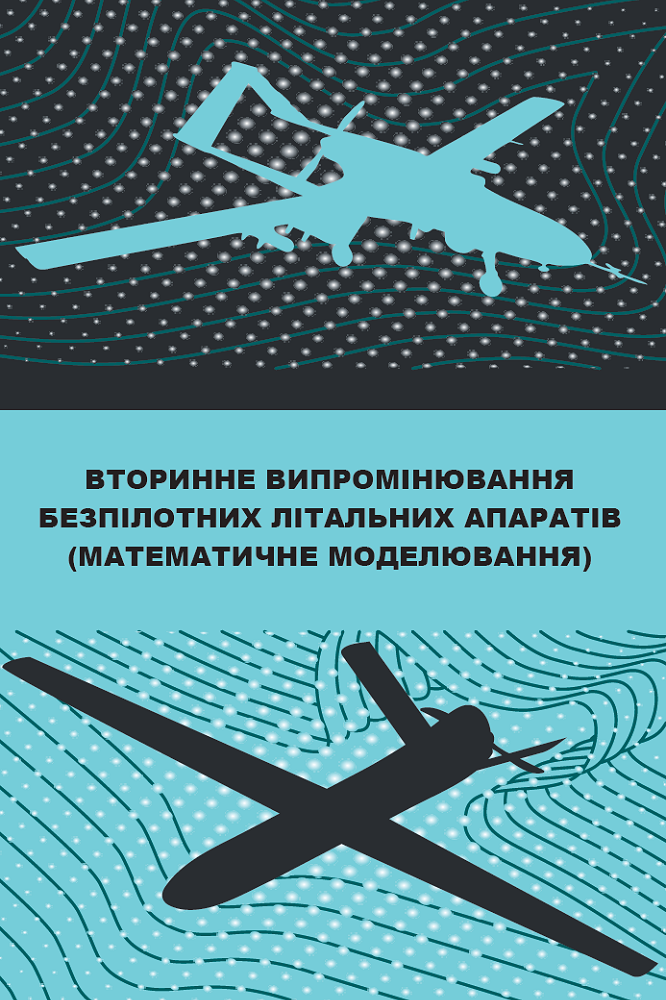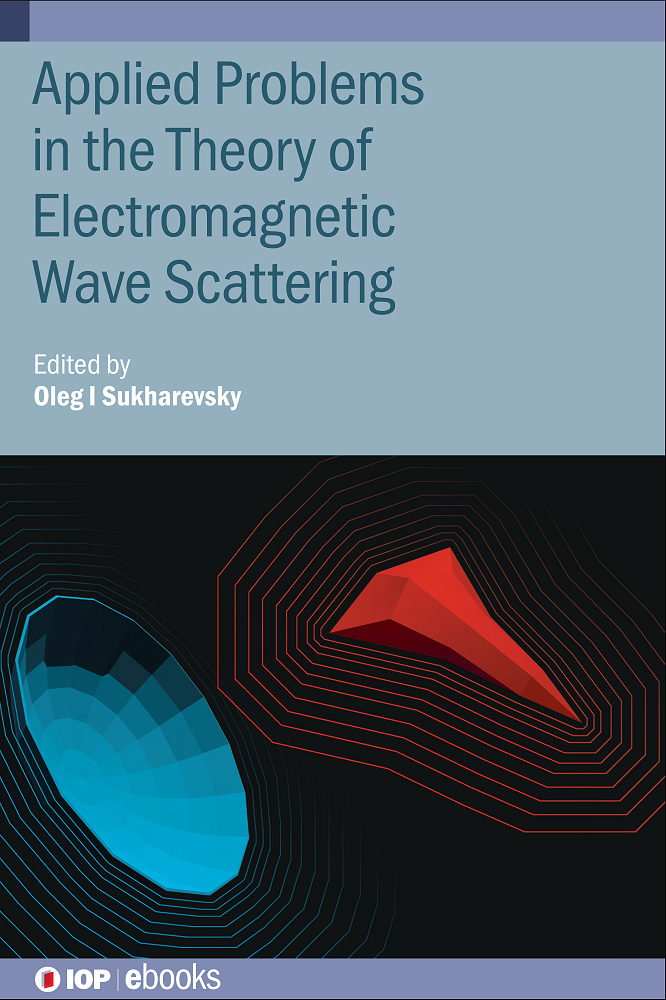
Electromagnetic Scattering Group
&
Professor Oleg I. Sukharevsky
present
the series of books with open access
(almost all books)

Scattering Characteristics Of Unmanned Aerial
Vehicles (Math Modeling)
(in Ukrainian)
Edited by professor O. Sukharevsky
Authors: Oleg I. Sukharevsky, Igor I Kaluzhinov, Vitaliy A. Vasilets, Stanislav A. Gorelyshev, Gennady S. Zalevsky, Ivan Ye. Ryapolov
Year: 2022
To download this book CLICK HERE.
In monograph, the methods for scattering characteristics of unmanned aerial vehicles have been obtained, as well as the ways for reducing its radar visibility. Also book consists of the data about scattering characteristics of some unmanned aerial vehicles.
This book will be suited for the scientists who specialize in area of electromagnetic wave scattering by unmanned aerial vehicles and for engineers who work with radar detection and recognition algorithms for aerial radar targets.
Contents
Introduction
1. Theoretical foundations for calculating scattering characteristics of unmanned aerial vehicle (high-frequency approximation)
1.1. Method for calculating electromagnetic wave scattering multilayer plane-parallel dielectric structure
1.2. Method for calculating electromagnetic wave scattering reflector antenna with a pointed radome
1.3. High-frequency method for calculating the scattering characteristics for model of the fuselage of an unmanned aerial vehicle
1.4. Electromagnetic wave scattering by thin wires placed inside dielectric shells
1.5. Scattering of a metal sphere under dielectric shell (in particular, multilayer) and methods lowering the radar cross section of the specified object
2. Reducing radar visibility of structural elements unmanned aerial vehicle in centimeter and decimeter wavelength ranges
2.1. Study of ways to reduce radar visibility fuselage of an unmanned aerial vehicle
2.1.1. Investigation of the shape of the intersection of the perfectly conducting fuselage of unmanned aerial vehicle
2.1.2. Investigation of radar scattering characteristics of various options for an perfectly conducting fuselage of unmanned aerial vehicle with reduced radar visibility
2.2. Study of ways to reduce the radar visibility of the wings and tail of an unmanned aerial vehicle
2.2.1. The choice of material and method of constructing the surface of the wing
2.2.2. Choosing the shape of a perfectly conducting fairing for the device aileron control
2.2.3. Optimization of laying thin wires inside radar transparent wing
3. Radar visibility of some individual elements of an unmanned aerial vehicle in the centimeter and decimeter ranges wavelengths
3.1. Scattering characteristics of whip antennas
3.2. Radar scatter characteristics of the unmanned aerial vehicle fuselage with external unit video recording
4. Examples of calculations of scattering characteristics by different unmanned aerial vehicles in centimeter and decimeter wavelength ranges
4.1. Scattering characteristics of the multipurpose unmanned aerial vehicle "Orlan-10"
4.2. Scattering characteristics of the reconnaissance unmanned aerial vehicle RQ-1 "Predator"
4.3. Scattering characteristics of the high-altitude reconnaissance unmanned aerial vehicle RQ-4 "Global Hawk"
4.4. Scattering characteristics of the tactical reconnaissance unmanned aerial vehicle RQ-7 "Shadow"
4.5. Scattering characteristics of the reconnaissance strike unmanned aerial vehicle Bayraktar TB2
4.6. Scattering characteristics of the unmanned aircraft monitoring the earth's surface ECO-1
4.7. Scattering characteristics of the unmanned aircraft Electra
5. Methods of integral equations for calculating scattering characteristics of unmanned aerial vehicles with resonant dimensions
5.1. Calculating scattering characteristics of metal (perfectly conducting) structural elements of unmanned aerial vehicle
5.1.1. Problem statement
5.1.2. Mathematical relations for solving the integral magnetic field equation for electric current density on surface of a perfectly conducting object
5.1.2.1. Auxiliary electromagnetic fields use
5.1.2.2. The integral equation of the magnetic field for the density of the electric current on the surface of a perfectly conducting resonant object
5.1.2.3. Elimination of ambiguous solutions of the integral equation magnetic field due to natural oscillations of the internal areas of the perfectly conducting object
5.1.2.4. Method for solving the integral equation of the magnetic field for electric current density on the surface of a perfectly conducting resonant object
5.2. Calculation of radar scattering characteristics dielectric structural elements of an unmanned aerial vehicle
5.2.1. Problem statement
5.2.2. Mathematical relations for solving the system Muller-type integral equations for equivalent currents on surface of a dielectric object
5.2.2.1. Auxiliary electromagnetic fields use
5.2.2.2. Integral Equations for Equivalent Current Densities surface of a dielectric resonant object
5.2.2.3. Method for solving a system of integral equations for densities equivalent currents on the surface of the dielectric resonant object
5.3. Accounting for the electromagnetic interaction between metal and dielectric structural elements of an unmanned aerial vehicle
6. Comparing scattering characteristics of the tactical unmanned aerial vehicle in meter, decimeter and centimeter wavebands
6.1. Unmanned aerial vehicle model
6.2. Scattering characteristics of the drone model in meter, decimeter and centimeter wavelength range
6.3. Scattering characteristics of design elements of the introduced unmanned aerial vehicle with maximum contribution to the total scattered field in meters and decimeter waverange
6.4. Scattering characteristics of propeller models in decimeter and centimeter wavelengths
6.5. Possible ways to reduce radar visibility resonant structural elements of an unmanned aerial vehicles in the meter and decimeter wave ranges
Conclusions
If you need more information, please contact us via email info@radar.dinos.net.



